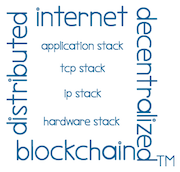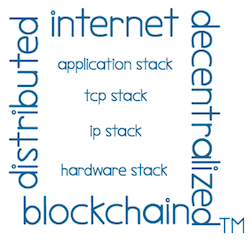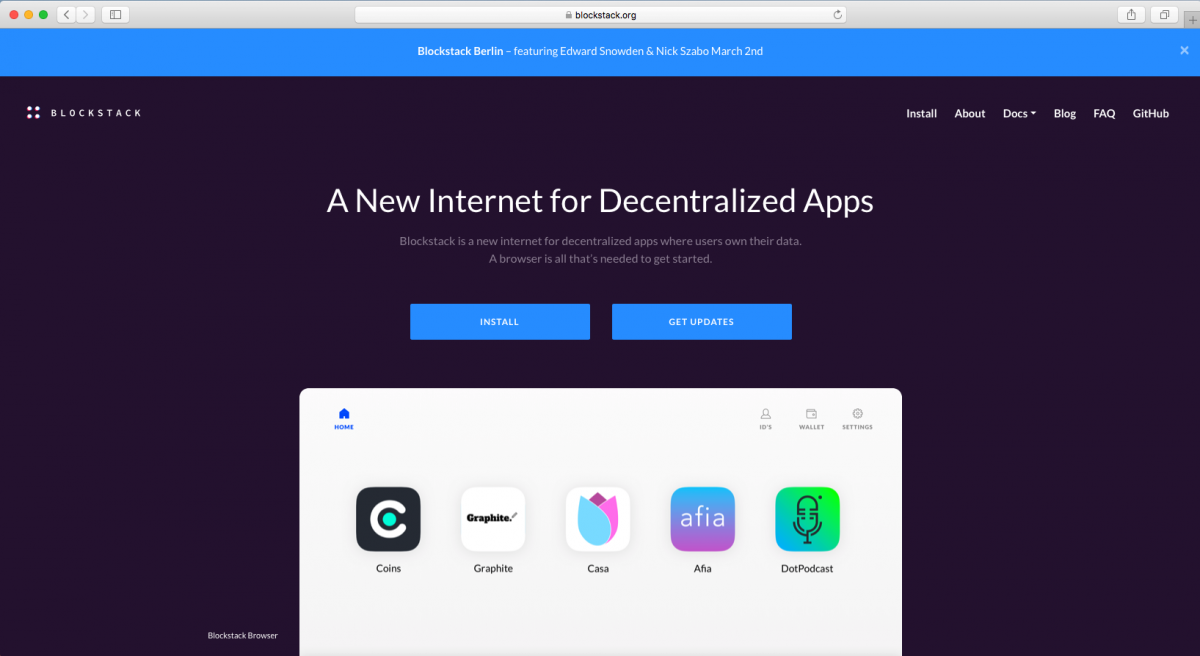Welcome to The Stack CafeTM — Let’s take a quick look at Blockstack. As discussed in a prior thread, Blockstack wants to provide the new decentralized internet. And, a decentralized internet, means? Well, let’s look at what Blockstack believes it means –
“A decentralized internet is one where users don’t need to trust any intermediaries or remote services. We envision a world where users control their own data, and power flows back to the users. Reducing the friction to deploying new Blockstack nodes is an important step towards that mission.”
In the present day centralized internet, web applications (or owners of the web applications) most likely own all of the user’s data from the use of the web application, control where the user’s data is stored and control the access to the user’s data. It appears that the user of web applications do not have much if any control. This is where Blockstack and its vision of a decentralized internet comes into view. Blockstack wants to help bring to fruition:
A decentralized internet free of:
- middlemen
- passwords (e.g., multiple passwords), and
- massive centralized data repositories that are susceptible to being breached.
A decentralized internet where the users:
- control their data;
- own their data, not the application provider
- control where their data is stored
- control who can access their data
- applications (apps) run on the user’s device (not on the server of a third party);
- do not have services tracking them around the internet.
A decentralized internet where developers:
- use java-script to build a single-page application;
- do not plug into the front-end of a centralized API;
- but can plug into an API run by the user;
- have a complete the step-by-step tutorial and libraries
- e.g., blockstack.js;
- don’t have to worry about:
- running servers;
- maintaining databases; or
- building out user management systems; and
- the applications are server-less and decentralized.
- users bring their own storage
- use public-key cryptography for authentication
- applications don’t have to store anything
A decentralized internet where Blockstack:
- includes a decentralized domain name system (DNS),
- includes a includes a decentralized public key distribution system,
- includes a registry for apps and user identities and
- includes a blockstack browser that allows the user to access the decentralized applications (dApps) that are used to access the blockstack decentralized internet
- tokens for use in the ecosystem (see Blockstack)
For more on the resources for developers, please visit:
With all of the above, Blockstack is forging ahead with the new internet for decentralized apps (dApps)(Web 3.0). From the users perspective, Blockstack gives the user identity freedom and data autonomy. From the developer’s perspective, things look simpler to build, easier to implement with reduced overhead in maintaining the application.
dApps available @Blockstack: The latest dApp developed for the Blockstack ecosystem is Graphite (allows the user (with multi-reader storage capability) to write without giving up its privacy)(See our post on Graphite). Here are the links you may want to check out:
- Blockstack
- Graphite
Note: If you do not have the Blockstack browser, please see this link (note – to enable the full functionality of any dApp built for the Blockstack ecosystem (e.g., building a new internet, a decentralized internet, re-decentralizing the internet) you need to use the Blockstack browser).
Thanks again for visiting The Stack CafeTM and we look forward to hearing from you. Please help us put out the word on Web3.0 by posting a comment below and signing up for e-mail notifications for future updates (right side-bar). Let’s help build the new internet | The Decentralized WayTM. A decentralized internet | The Way The FutureTM.


